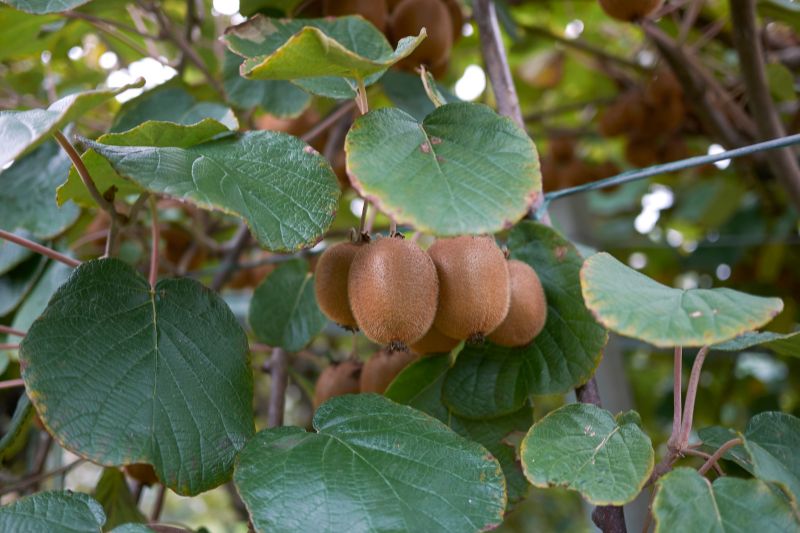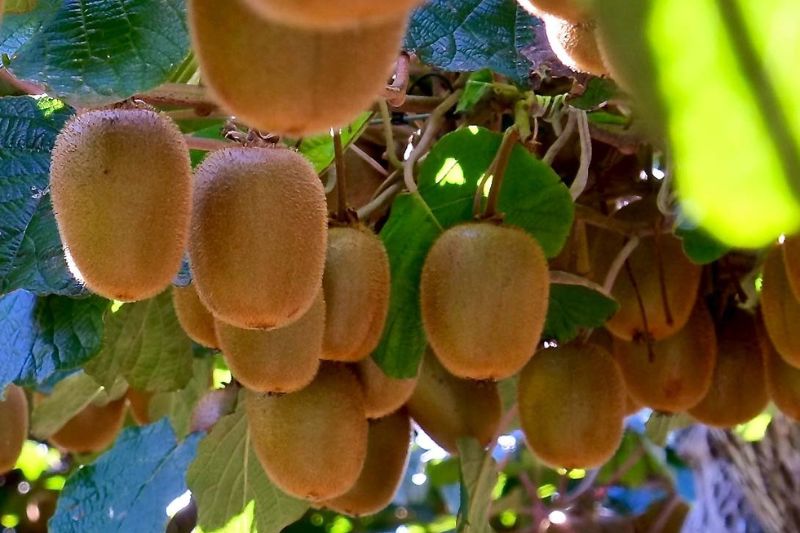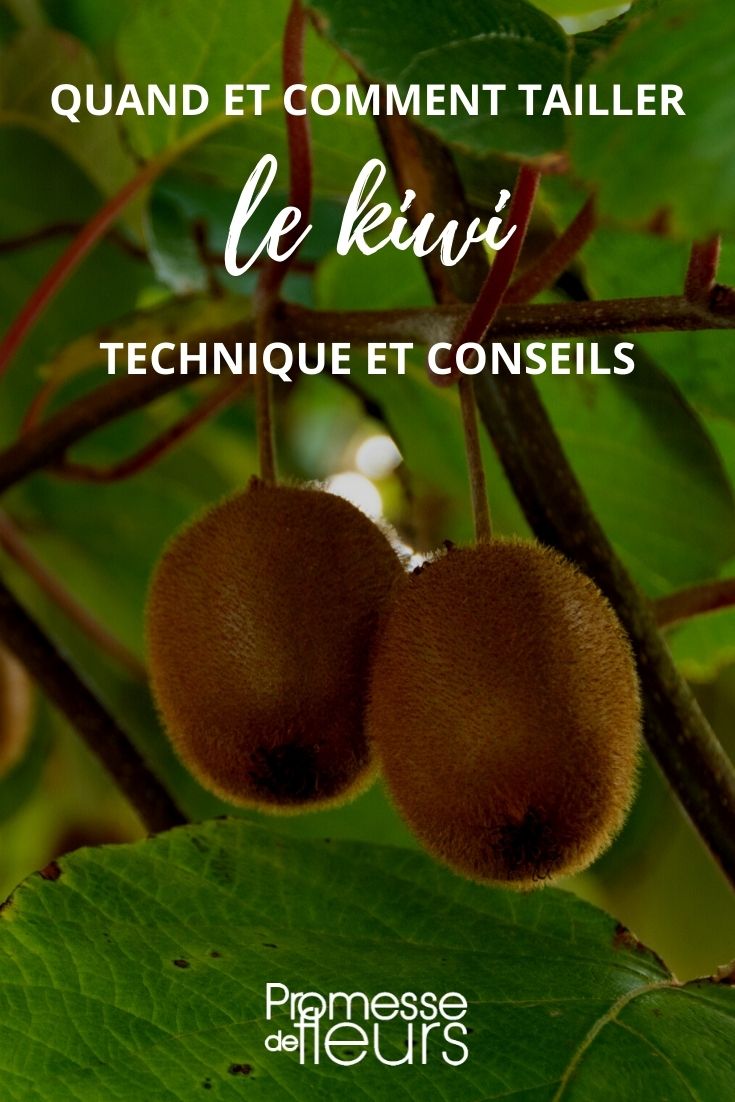Kiwis (Actinidia chinensis or deliciosa and arguta), prized for their vitamin C-rich fruits, grow on a liana known as actinidia or the kiwi tree. To ensure large, delicious fruits in abundance, the actinidia (sometimes mistakenly called the kiwi tree) requires pruning. Whether it's a female, male, or self-fertile kiwi plant, here are some valuable tips on when and how to prune your kiwi.
Why Should You Prune the Kiwi Tree?
The actinidia is a vigorous, woody climbing plant that tends to cling, using its tendrils, to a support like a trellis, arbour, or pergola. It can grow over 8 metres in just one year! This support must be sturdy enough to bear the weight of the stems, foliage, and fruits. This training step, to be done at planting, is therefore obligatory.
In addition to this rapid growth, consider its fruiting, which only occurs on shoots developed in the current year. Varieties like ‘Hayward’, ‘Wonder’, or ‘Jenny’ produce abundant, large, and tasty fruits if pruned correctly. This essential step helps maintain the plant's shape, control its expansion, and ensure bountiful harvests.

When to Prune a Kiwi?
Once planted in spring or autumn, you might wonder which month is best for pruning kiwis. First, during the first two years after planting, a simple "training prune" between December and February will suffice.
After that, an annual winter prune between December and February is necessary, followed by a second prune in July with a touch-up in August to limit the number of fruits.
How to Prune a Kiwi Tree Step by Step
What Tools Do You Need to Prune Actinidia?
Equip yourself with pruning shears with sharp, clean blades for small branches and a small pruning saw for thicker branches or a branch cutter for higher branches. If your kiwi tree is tall, prepare a ladder or step stool positioned safely. Before starting, wear gloves to avoid cuts or scrapes.

Training Prune for Kiwi
During the first two years after planting the actinidia, a light training prune is necessary to ensure the bush's development and abundant fruiting.
- The year after planting, simply cut the branches in half and take the opportunity to tie them to the support.
- The second year, prune between December and February. Keep the main branches at 50 cm to encourage fruiting branches. Cut young shoots (smaller-diameter branches) above the 4th or 5th eye and secure them to the support. Continue training the branches to cover as much of the support as possible. This training will make harvesting easier.
After that, every year, a well-established kiwi plant requires two obligatory prunes to ensure abundant fruiting:
Winter Cleaning Prune for Kiwi
Outside freezing periods, this first prune will help aerate the tree's shape and retain only the most vigorous branches.
During the dormant period, between December and February, perform the winter prune. Using pruning shears or a branch cutter, remove dead or damaged branches. Then, cut back shoots that bore fruit the previous year, leaving 2 to 3 eyes above the last fruit.
Summer Fruiting Prune for Kiwi
In July, when the fruits are about 1 cm, perform a "green prune". This involves removing excess fruits, leaving only 4 leaves above the last fruit cluster. Use this prune to cut branches that bear neither flowers nor fruits. The goal is to keep 5 to 6 fruits per fruiting branch.
In August, trim shoots that have grown well after the July prune, leaving only 2 leaves above the last fruit group.
Stéphanie's tip: To make it easier to spot fruiting branches in winter, leave the kiwi peduncles after harvesting. This marker will simplify winter pruning.
What About Pruning Self-Fertile Kiwis?
A self-fertile kiwi plant (like Actinidia deliciosa ‘Jenny’) bears both male and female flowers, allowing fruiting without a pollinator. Pruning remains essential, even if it's alone, as its vigour matches that of other kiwis.
The same winter and summer pruning principles apply: reduce shoots that have fruited, limit the number of fruits per branch, and remove unnecessary stems.
→ To learn more about training kiwi plants, read our article: "How to Train a Kiwi Plant?"
































Comments